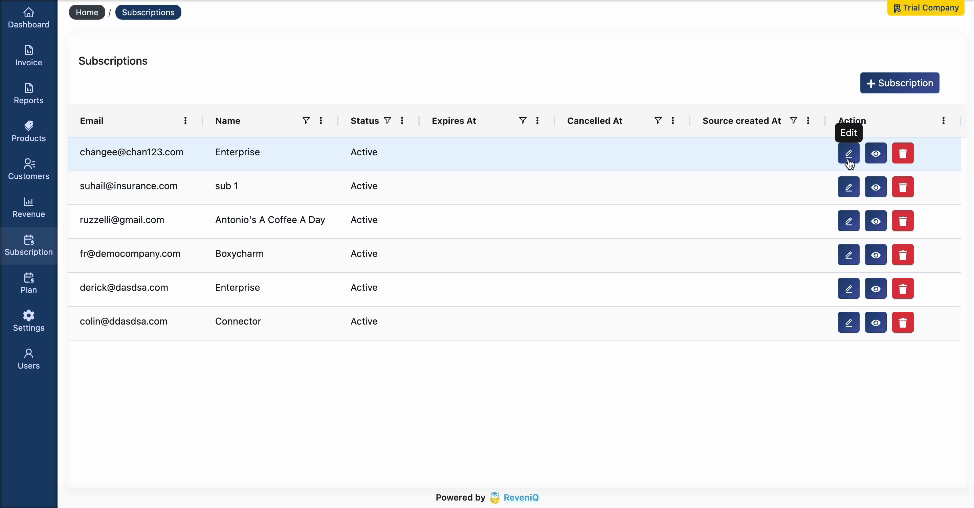ReveniQ
Role: Product Strategist
Focus: Product direction, market expansion, and product-market fit refinement
Background
When I joined ReveniQ, the platform had strong core functionality: it acted as a middle layer between key platforms like Stripe, Xero, and Netsuite, automatically ingesting and interpreting billing and revenue data. It provided clean, report-ready insights on foundational SaaS metrics — MRR, ARR, churn rate, and more — while enabling seamless report generation.
This offering worked well for companies already operating with a subscription model. But our market was narrow. We realized there was an emerging opportunity — a cohort of businesses wanting to transition to subscription models, but without the tooling or financial infrastructure to do so smoothly.

Challenge
How do we serve the next generation of SaaS businesses — early-stage or transactional companies looking to adopt recurring revenue models?
These companies didn’t need just analytics. They needed a platform that could help them operationalize subscriptions: billing, proration, upgrades/downgrades, revenue recognition, and financial reporting — all wrapped into a single tool that required minimal setup.
We needed to take ReveniQ from analytics tool to end-to-end subscription engine — without abandoning our core user base.
My Role & Strategy
As Product Strategist, I helped lead the shift in product vision and positioning. I worked cross-functionally with leadership, engineering, design, and customer success to:
1. Identify the gap in the market
Analyzed usage patterns and churn reasons from early customers.
Conducted interviews with new prospects who liked the analytics side of ReveniQ but lacked the systems to get started with subscriptions.
Found strong interest from niche industries (B2B services, traditional product companies) who wanted to “SaaS-ify” but felt overwhelmed.
2. Reframe our product offering
We weren’t just a financial metrics tool anymore — we were a subscription enablement platform.
Created messaging around “Make Subscription Work Easy”, targeting companies making their first move into recurring revenue.
3. Define the expanded product roadmap
Added a full subscription management layer: recurring billing, proration logic, invoicing automation, customer lifecycle tracking, and more.
Ensured metrics like CLTV, CAC, churn rate, revenue per customer, and retention could be auto-calculated and visualized.
Integrated back into our existing analytics stack to ensure continuity of reporting for both old and new users.
4. Support GTM strategy with marketing & sales
Worked with marketing to rework content on Subscription Management page and communicate our broader use case.
Helped sales frame ReveniQ as an easy-entry SaaS layer for non-SaaS businesses — with a focus on speed to implementation, accuracy, and compliance.

Results
Broadened our customer base beyond typical SaaS — now supporting hybrid models, B2B consultancies, and product companies moving into subscriptions.
Shortened onboarding time for new users entering subscription billing for the first time.
Saw increased trial-to-paid conversion among users in “subscription transition” phase thanks to product education and reduced complexity.
Enabled clearer conversations with accountants and bookkeepers, who could now use ReveniQ to support client subscription migrations.
Takeaways:
- Product-market fit exploration through customer behavior and market listening
- Strategic product expansion without alienating core users
- Positioning and messaging alignment across product, sales, and marketing
- Ability to think beyond the feature set — focusing instead on customer problems, transitions, and outcomes